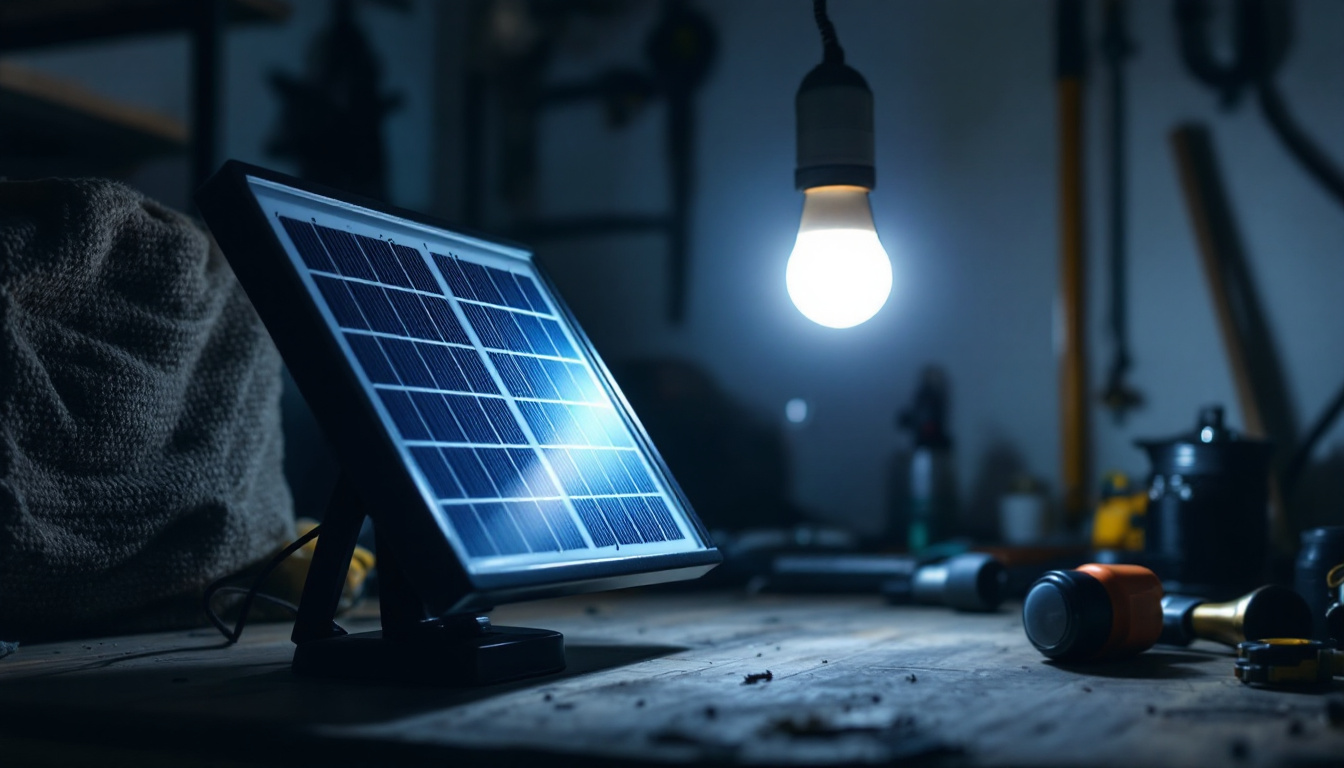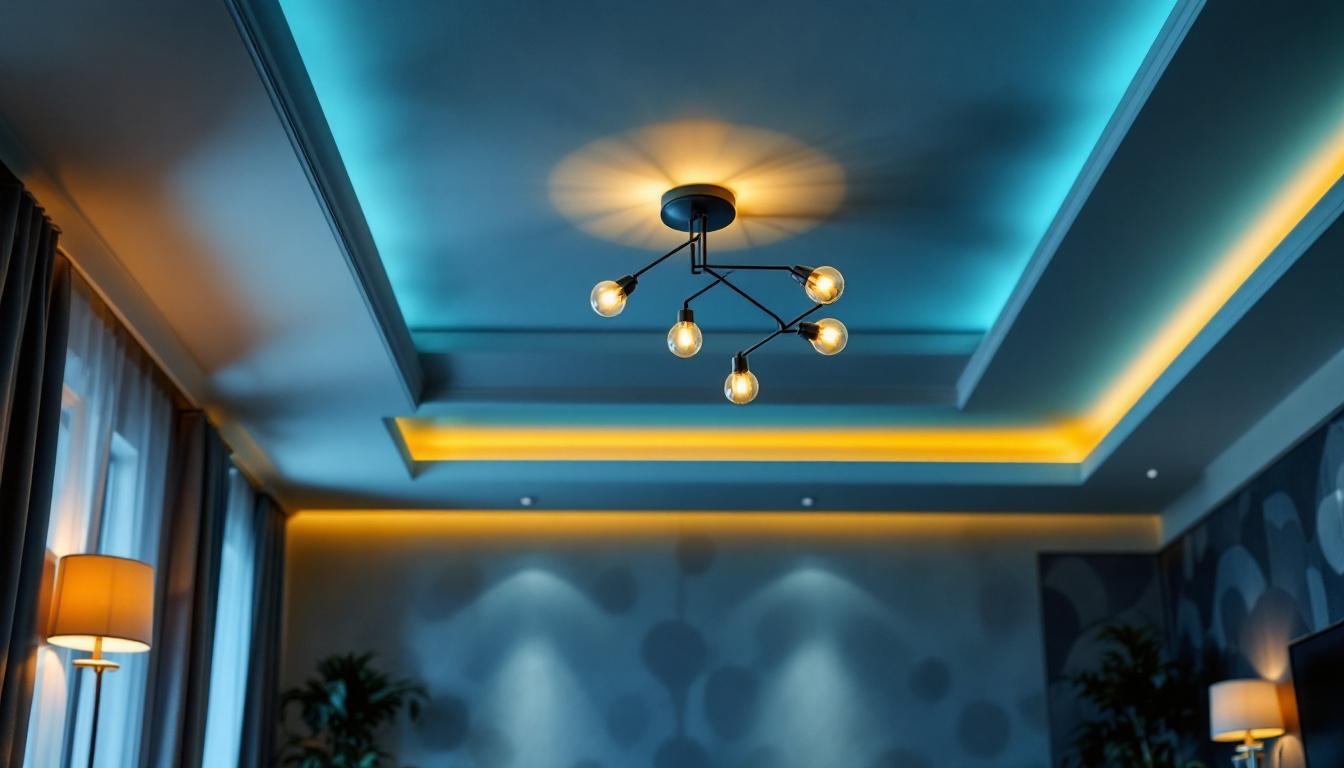
As the world continues to embrace renewable energy solutions, solar lighting has emerged as a popular choice for both residential and commercial applications. However, a common question arises among lighting contractors: Can solar lights be charged using a bright light bulb? This inquiry not only reflects a curiosity about the functionality of solar technology but also highlights the evolving landscape of lighting solutions. In this article, we will explore the mechanics of solar lights, the feasibility of charging them with artificial light, and how these insights can transform the way lighting contractors operate.
Solar lights are designed to harness sunlight and convert it into energy. They typically consist of a solar panel, a rechargeable battery, an LED light, and a controller. During the day, the solar panel absorbs sunlight and converts it into electricity, which is stored in the battery. When night falls, the stored energy powers the LED light, illuminating the area.
The efficiency of solar lights depends significantly on the quality of the solar panel and the amount of sunlight they receive. In regions with ample sunlight, solar lights can operate effectively, providing a sustainable and cost-effective lighting solution. However, in areas with limited sunlight, the performance of solar lights may be compromised. Additionally, advancements in solar technology have led to the development of more efficient solar cells, which can capture a broader spectrum of light and convert it into usable energy. This means that even in partially shaded areas, modern solar lights can still perform admirably, making them a versatile option for various environments.
Rechargeable batteries are a crucial component of solar lights. They store the energy generated by the solar panels and release it when needed. Most solar lights use either nickel-cadmium (NiCd) or lithium-ion batteries. NiCd batteries are known for their durability and ability to withstand extreme temperatures, while lithium-ion batteries offer higher energy density and longer life spans.
Understanding the type of battery used in solar lights is essential for lighting contractors. It influences not only the performance of the lights but also the maintenance and replacement schedules. Proper knowledge of battery technology can enhance the contractor’s ability to recommend the best solar lighting solutions to clients. Furthermore, the choice of battery can also affect the charging time and the overall lifespan of the solar light system. For instance, while lithium-ion batteries may require a higher initial investment, their longevity and efficiency can lead to significant savings over time, making them a popular choice for both residential and commercial applications.
The question of whether solar lights can be charged with bright light bulbs is intriguing. In theory, solar panels can convert various types of light into energy, including artificial light. However, the efficiency of this process is significantly lower compared to natural sunlight. Solar panels are specifically designed to absorb the wavelengths emitted by the sun, which means that while they can technically harness artificial light, the conversion rate is far from optimal.
While it is possible to charge solar lights using a bright light bulb, the effectiveness depends on several factors, including the intensity of the light, the distance from the light source, and the duration of exposure. For instance, a standard incandescent bulb emits a considerable amount of heat, which can be detrimental to the solar panel’s performance. In contrast, LED bulbs are more efficient and produce less heat, making them a better option for attempting to charge solar lights artificially. Moreover, the angle at which the light hits the solar panel can also affect charging efficiency; a direct angle will yield better results than an oblique one. Therefore, positioning and light quality are critical components in this unconventional charging method.
For lighting contractors, understanding the limitations and possibilities of charging solar lights with artificial light can open new avenues for service offerings. In scenarios where natural sunlight is scarce—such as in indoor installations or shaded areas—contractors can explore the use of bright light bulbs as a supplementary charging method. This could be particularly useful in urban settings where tall buildings obstruct sunlight or in regions with prolonged overcast conditions.
This knowledge allows contractors to provide tailored solutions for clients who may be concerned about the reliability of solar lighting in less-than-ideal conditions. By offering advice on the best types of artificial light to use, contractors can enhance customer satisfaction and trust. Furthermore, they can educate clients on the importance of maintaining solar panels and the potential benefits of integrating smart lighting systems that can automatically switch to artificial light charging when sunlight is insufficient. Such proactive measures not only improve the performance of solar lights but also demonstrate a contractor’s commitment to sustainable practices, thereby setting them apart in a competitive market.
One of the most significant advantages of solar lighting is its cost-effectiveness. Once installed, solar lights require minimal maintenance and no electricity costs, as they rely solely on solar energy. This can lead to substantial savings for both residential and commercial clients over time. The initial investment may seem higher compared to traditional lighting, but the return on investment is often realized within a few years, making it a financially sound choice in the long run.
Lighting contractors can leverage this aspect when pitching solar lighting solutions. By highlighting the long-term savings and reduced operational costs, contractors can appeal to budget-conscious clients who are looking for sustainable options. Additionally, many regions offer incentives and rebates for solar installations, further enhancing the financial appeal. Clients can benefit from these programs, making solar lighting an even more attractive option that aligns with their financial and environmental goals.
Solar lighting is an environmentally friendly alternative to traditional lighting solutions. By utilizing renewable energy, solar lights help reduce carbon footprints and contribute to a more sustainable future. This aspect resonates well with clients who prioritize eco-friendly practices. Furthermore, solar lights operate independently of the grid, which means they can be deployed in remote areas where traditional electrical infrastructure is lacking, thus promoting energy access and sustainability in underserved communities.
Contractors can position themselves as advocates for sustainability by promoting solar lighting solutions. This not only enhances their brand image but also aligns with the growing demand for environmentally responsible products and services. By educating clients about the lifecycle benefits of solar lighting, including reduced waste from conventional bulbs and the potential for recycling components, contractors can foster a deeper understanding of how solar lighting contributes to a circular economy. This knowledge empowers clients to make informed decisions that reflect their commitment to both cost savings and environmental stewardship.
Despite the many advantages of solar lighting, there are challenges that contractors must consider. The performance of solar lights can be affected by various factors, including geographic location, weather conditions, and seasonal changes. In regions with long winters or frequent overcast days, solar lights may struggle to charge adequately.
Lighting contractors should educate clients about these limitations and set realistic expectations regarding the performance of solar lights. By providing insights into how weather patterns can affect solar energy generation, contractors can help clients make informed decisions.
The installation of solar lights requires careful consideration of placement and orientation. To maximize sunlight exposure, solar panels should be positioned in areas that receive direct sunlight for most of the day. This may involve strategic planning, especially in landscapes with trees or buildings that could cast shadows.
Contractors must assess each installation site for optimal solar panel placement. This not only ensures the efficiency of the solar lights but also enhances the overall aesthetic of the lighting design. By taking the time to evaluate each location, contractors can deliver superior results that meet client expectations.
The advent of smart technology has revolutionized the solar lighting industry. Smart solar lights come equipped with features such as motion sensors, remote control, and integration with smart home systems. These innovations enhance the functionality and convenience of solar lighting solutions.
For lighting contractors, offering smart solar lights can differentiate their services from competitors. Clients are increasingly seeking advanced lighting solutions that provide added security and energy efficiency. By staying informed about the latest innovations, contractors can position themselves as industry leaders.
Advancements in battery technology have significantly improved the performance and longevity of solar lights. Newer battery types, such as lithium iron phosphate (LiFePO4), offer enhanced safety, longer life cycles, and better thermal stability. These improvements translate to more reliable solar lighting solutions for clients.
Contractors should keep abreast of developments in battery technology to provide informed recommendations. Understanding the benefits of different battery types can help contractors choose the best products for specific applications, ensuring client satisfaction and optimal performance.
The question of whether solar lights can be charged with a bright light bulb opens up a dialogue about the future of solar technology in the lighting industry. As the demand for sustainable and efficient lighting solutions grows, lighting contractors have the opportunity to adapt and innovate.
By understanding the mechanics of solar lights, the potential for charging with artificial light, and the latest technological advancements, contractors can enhance their service offerings and meet the evolving needs of clients. Embracing solar lighting solutions not only benefits the environment but also positions contractors as forward-thinking professionals in a rapidly changing industry.
As the landscape of lighting continues to evolve, staying informed and adaptable will be key for contractors looking to thrive in the competitive market. The integration of solar technology into lighting solutions represents a significant step towards a more sustainable future, and contractors play a vital role in this transformation.
Ready to elevate your lighting solutions and lead the charge in sustainable innovation? At LumenWholesale, we provide lighting contractors with the highest quality, spec-grade solar lights and more, all at unbeatable wholesale prices. Say goodbye to middleman markups and hello to a vast selection of industry-standard, reliable lighting products that will illuminate your projects and delight your clients. With the added convenience of free shipping on bulk orders, you can trust that you’re getting the best value without any hidden fees. Take the next step in transforming your lighting business with Wholesale Lighting at the Best Value from LumenWholesale.

Discover the essential guide for lighting contractors to transform living room ceilings with expert tips, innovative designs, and the latest trends in illumination.

Discover how understanding fluorescent light ballasts can give lighting contractors a competitive edge.

Illuminate your outdoor spaces with expert advice! Discover essential tips from lighting contractors on choosing and installing the perfect outdoor light fixtures to enhance your home’s curb appeal and security..

Discover the importance of Hanging Shop Lights Work 48 LED 5000 Kelvin for lighting contractors.